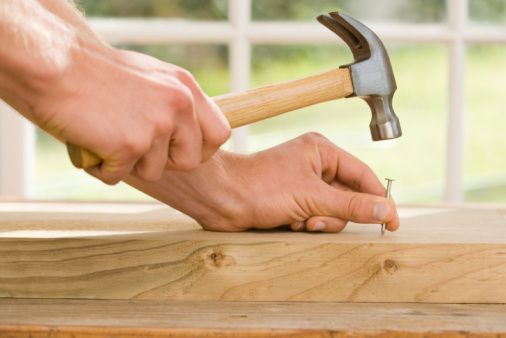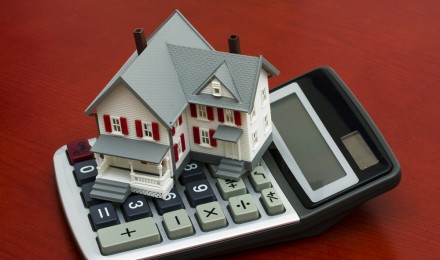When you want to build a home instead of buying a home, the process of obtaining financing is much more complicated. The challenge arises because the home that is supposed to be collateral for the loan is not yet constructed. If the home is going to cost $200,000 to build, the bank will need to lend you this money before there is actually a $200,000 home constructed on the property. If the completed home is not worth the $200,000 that was lent to build it, then the bank will be left with insufficient collateral to secure the money that was lent.
Because of the added risk to mortgage lenders, not all lenders offer construction financing and there will be more stringent qualifying to obtain a construction loan.
The Construction Loan Process
To obtain a construction loan, you will be required to have land and a builder or architect selected prior to applying for the financing. The builder or architect will also have to provide specifications for the home-to-be built so the mortgage lender can appraise the home that is to be completed in order to determine if the home will be sufficient collateral to support the final loan.
Consider a person who wants to build a home that will cost $200,000 to build. The appraiser would review the proposed specifications for the home and compare them to other similarly priced homes to decide if the house would be worth what it cost to build. If the lender has doubts about whether the home will be worth enough, the home-buyer may not receive the loan or may need to put down a larger amount of money.
The minimum amount of money that a homeowner will need to put down in order to obtain a construction loan usually ranges from 20 to 25 percent.
The End Loan
When you obtain a construction loan, the loan is usually short-term financing that lasts only for the time it takes to build the house. At the end of this process, the loan then needs to convert to a permanent end loan.
To ensure that you are actually able to convert your loan to an end loan, the bank will approve you for the most conservative loan product. For instance, the bank would approve you for a 30-year fixed rate final mortgage for the total amount you borrowed. As your home nears completion, you will have your home appraised again and you will complete the approval process for the final mortgage.
The Build Process
After you have been approved for you construction loan, the builder will usually receive the money to build the house in increments called “draws.” The builder will be given an initial sum of money in order to begin the build process and will then have draws at periodic increments once milestones in the home build are complete. The builder may receive a portion of the total cost to build once the house has been completely framed, once the drywall is complete, and once the plumbing is done.
The schedule of draws is set up at the beginning of the construction loan process and typically you will need to sign off on each draw before the builder receives his money. The appraiser for your home may also check the progress before each draw is paid out to ensure that things are on track and that the builder is performing the work expected in an adequate manner.
At the end of the construction phase, the final amount due to the builder will be paid off by your end loan. Any extras or overages during the build will also need to be paid at this time in order for the settlement to go through and the home to become yours.
When you want to build a home instead of buying a home, the process of obtaining financing is much more complicated. The challenge arises because the home that is supposed to be collateral for the loan is not yet constructed. If the home is going to cost $200,000 to build, the bank will need to lend you this money before there is actually a $200,000 home constructed on the property. If the completed home is not worth the $200,000 that was lent to build it, then the bank will be left with insufficient collateral to secure the money that was lent.
Because of the added risk to mortgage lenders, not all lenders offer construction financing and there will be more stringent qualifying to obtain a construction loan.
The Construction Loan Process
To obtain a construction loan, you will be required to have land and a builder or architect selected prior to applying for the financing. The builder or architect will also have to provide specifications for the home-to-be built so the mortgage lender can appraise the home that is to be completed in order to determine if the home will be sufficient collateral to support the final loan.
Consider a person who wants to build a home that will cost $200,000 to build. The appraiser would review the proposed specifications for the home and compare them to other similarly priced homes to decide if the house would be worth what it cost to build. If the lender has doubts about whether the home will be worth enough, the home-buyer may not receive the loan or may need to put down a larger amount of money.
The minimum amount of money that a homeowner will need to put down in order to obtain a construction loan usually ranges from 20 to 25 percent.
The End Loan
When you obtain a construction loan, the loan is usually short-term financing that lasts only for the time it takes to build the house. At the end of this process, the loan then needs to convert to a permanent end loan.
To ensure that you are actually able to convert your loan to an end loan, the bank will approve you for the most conservative loan product. For instance, the bank would approve you for a 30-year fixed rate final mortgage for the total amount you borrowed. As your home nears completion, you will have your home appraised again and you will complete the approval process for the final mortgage.
The Build Process
After you have been approved for you construction loan, the builder will usually receive the money to build the house in increments called “draws.” The builder will be given an initial sum of money in order to begin the build process and will then have draws at periodic increments once milestones in the home build are complete. The builder may receive a portion of the total cost to build once the house has been completely framed, once the drywall is complete, and once the plumbing is done.
The schedule of draws is set up at the beginning of the construction loan process and typically you will need to sign off on each draw before the builder receives his money. The appraiser for your home may also check the progress before each draw is paid out to ensure that things are on track and that the builder is performing the work expected in an adequate manner.
At the end of the construction phase, the final amount due to the builder will be paid off by your end loan. Any extras or overages during the build will also need to be paid at this time in order for the settlement to go through and the home to become yours.







